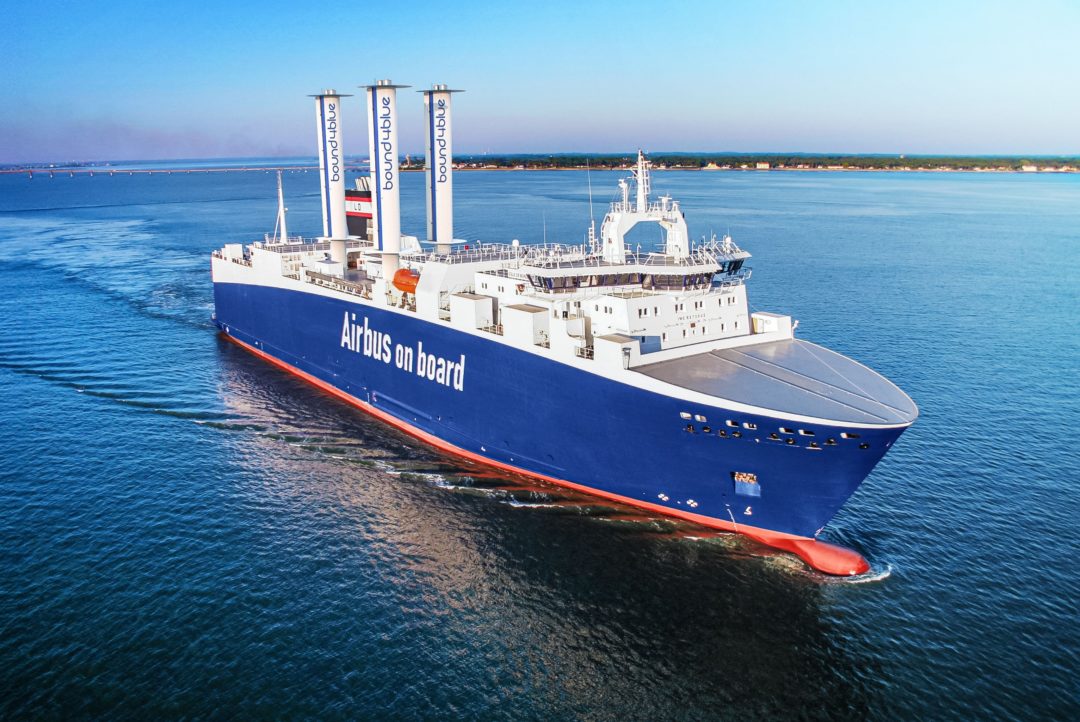
Photo: bound4blue
Airbus to Equip Ro-Ro Vessel with Wind-Power Technology
Airbus will equip one of the ro-ro vessels it uses to transport aircraft sub-assemblies with a wind-assisted propulsion technology that captures wind energy to generate thrust and, therefore, delivers savings in fuel consumption and CO2 emissions.
The 22-metre (72-feet) high eSAIL, developed by the Barcelona-based firm bound4blue, will be installed on the ro-ro ship Ville de Bordeaux, chartered from shipowner Louis Dreyfus Armateurs. It consists of a sail-like vertical surface and an electric-powered air suction system that helps the airflow to re-adhere to the sail, generating additional lift and thereby reducing the load on the ship’s main engines. Its makers say it creates as much as six to seven times more lift than a conventional rigid sail.
The Ville de Bordeaux regularly ferries A320 Family sub-assemblies from Europe to Mobile in the United States for final assembly. Fitting the eSAILs on the Ville de Bordeaux supports Airbus’ commitment to halve CO2 emissions from its maritime operations by 2030, compared to a 2015 baseline. The installation is co-funded by the European Union.
“We at Airbus have been studying wind-assisted technologies as a potential energy source for our maritime operations for many years,” said Nicolas Chrétien, head of sustainability & environment at Airbus. “This technology looks promising, and we are eager to start testing it in real conditions by the end of the year.”
David Ferrer, CTO of bound4blue, said: “After having implemented and proven our technology on three ships already, we’re excited to install our 22-metre eSAILs on Ville de Bordeaux. This deployment will mark the first-ever fixed suction sail installation on a ro-ro ship, demonstrating that suction sails can be deployed on ships with high weather deck and large windage area, not compromising the vessel’s stability.”
